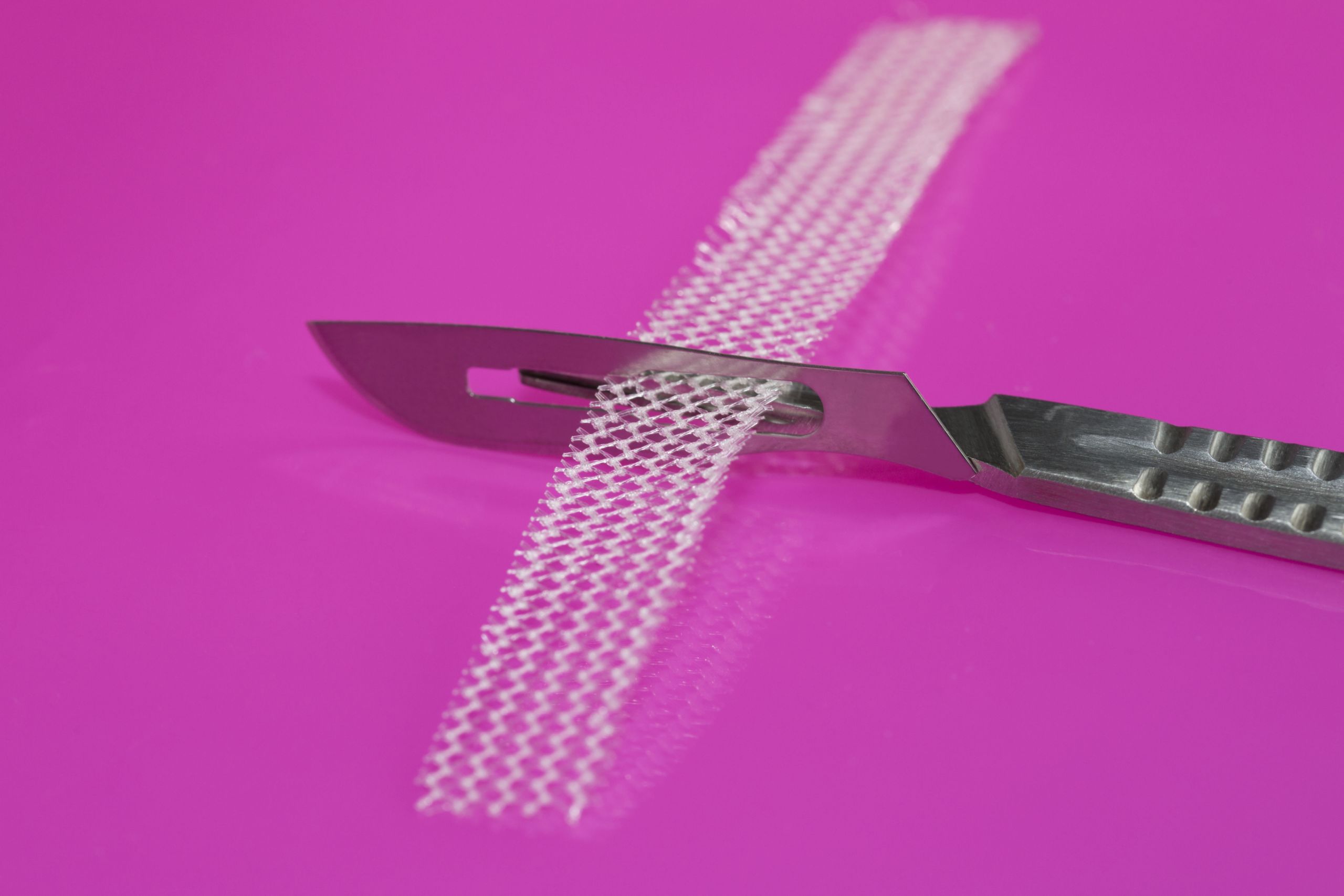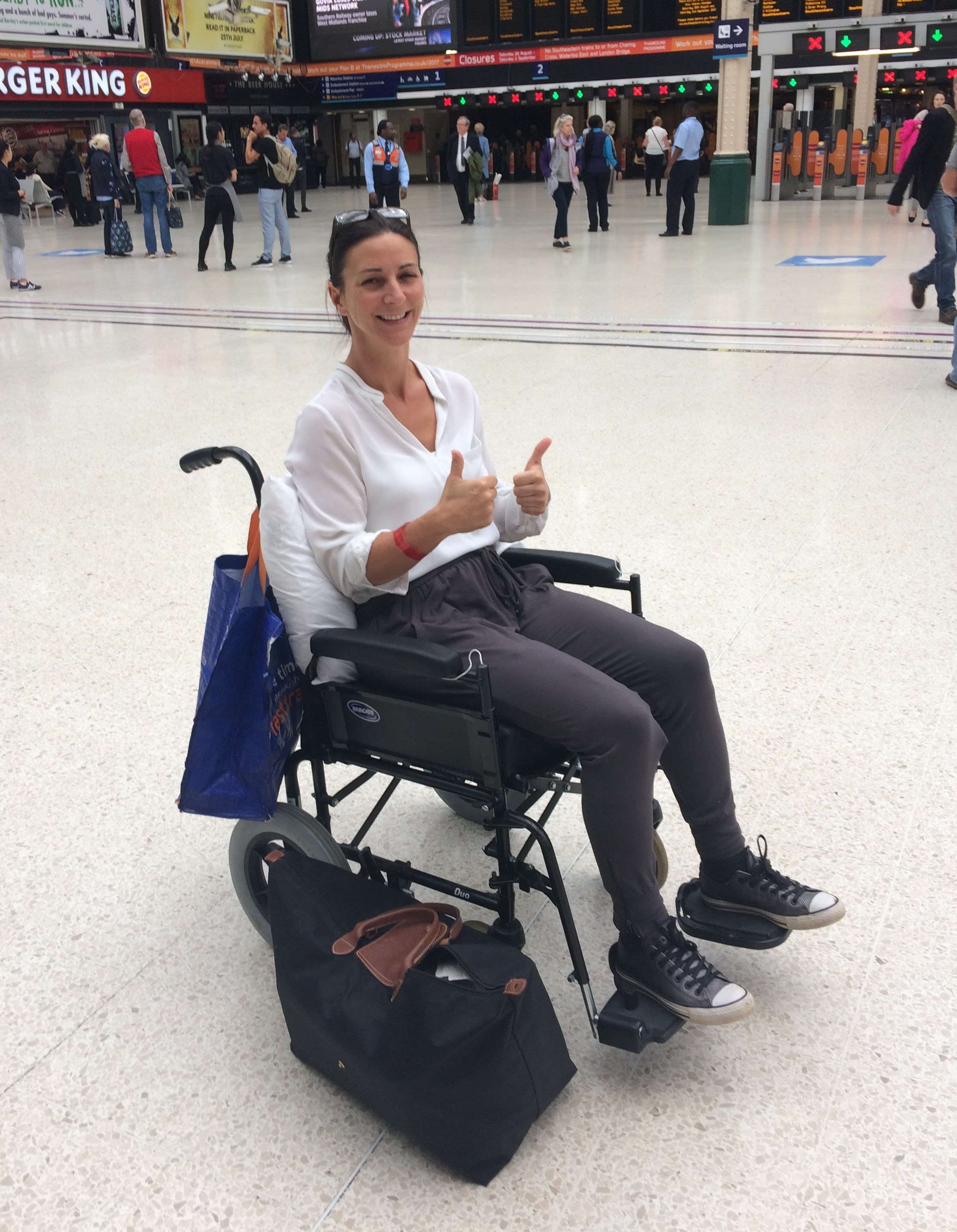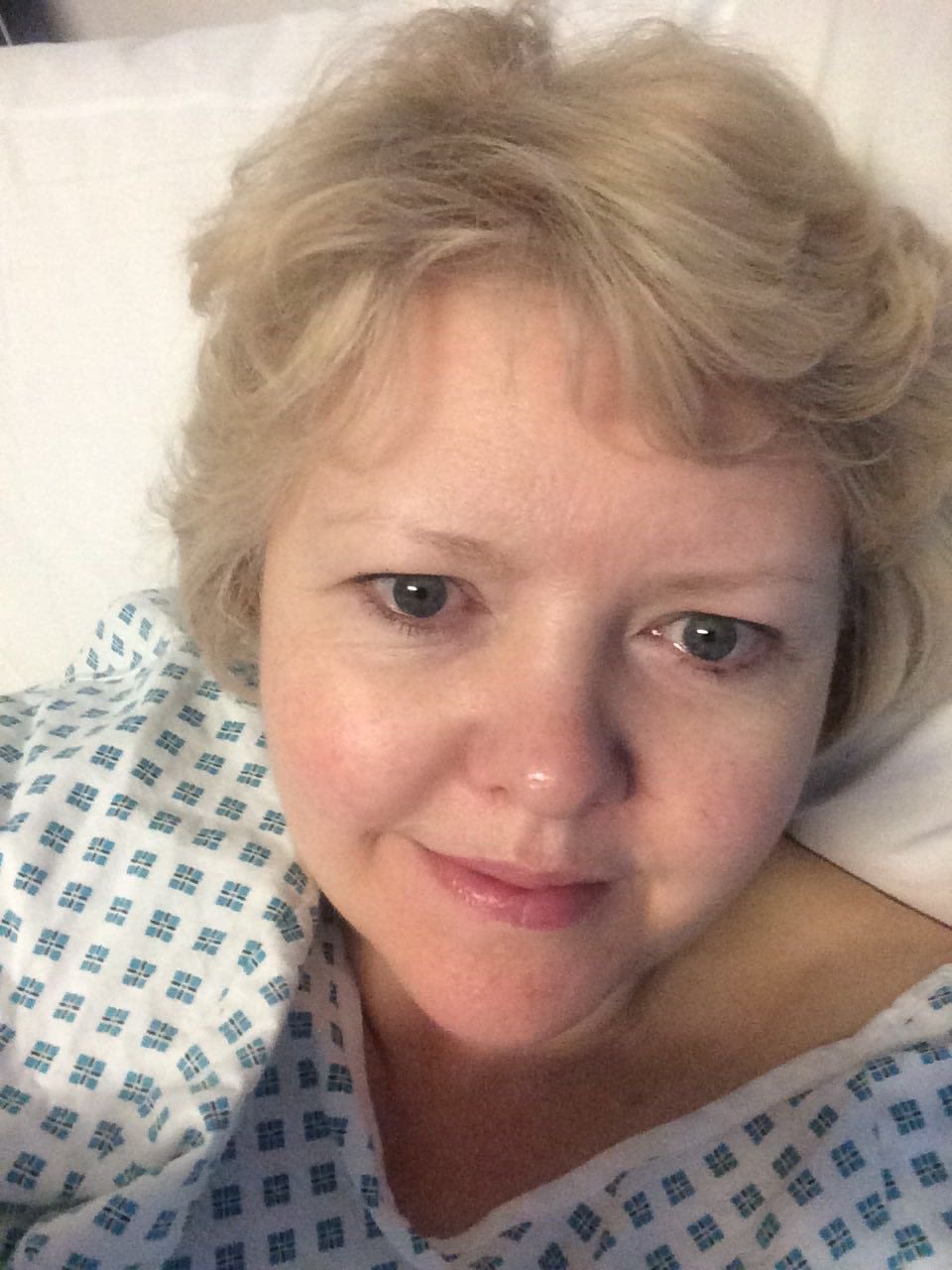"The ticking time-bomb within me" - How surgical mesh turned thousands of women's lives upside down
An insight into the experiences of three incredible women affected by the use of vaginal mesh.

Vaginal mesh implants have left thousands of women in the UK with life-changing injuries after they faced years of dismissal by medical professionals who declared their suffering a result of 'women's problems'.
The procedure was introduced to support weakened pelvic muscles and treat symptoms of stress urinary incontinence (SUI), a condition that can occur with age and childbirth.
Variations of the mesh include tension-free vaginal tape (TVT), tension-free vaginal tape obturator (TVT-O), and transobturator tape (TOT). The difference lies in the method they are inserted.
Offered as a somewhat miracle quick-fix procedure, women were not adequately warned of possible complications.
Tracey Ayling, 51, explained: “There was no doubt in my mind of what they said was the best thing for me". And Lee-Anne Stubbings, 48, said: "A product that is going into your body in an operation, you trust them completely.”
Whilst some women's symptoms improved, for many others the mesh not only worsened existing issues but also introduced new ones.

Pictured: Tension-free vaginal tape (TVT). TVT is used to treat symptoms of stress urinary incontinence (SUI) by helping support the urethra. Credit: Beate Panosch/Shutterstock.com
Pictured: Tension-free vaginal tape (TVT). TVT is used to treat symptoms of stress urinary incontinence (SUI) by helping support the urethra. Credit: Beate Panosch/Shutterstock.com
Symptoms can include chronic pain in the legs, groin and pelvis, intense and recurring water infections, vaginal bleeding, and perforation of organs and tissue, which has left some women in wheelchairs.
Known to disintegrate and harden overtime, the mesh can leave a sharp and highly uncomfortable foreign object within the body that causes severe irritation.
As Katya Wright, 48, explained: “A good example is when you have a children’s plastic toy in the garden which overtime becomes very hard and brittle and breaks off. Similarly, for many of us women, the plastic mesh goes hard and fragments, and you have bits of it sawing into parts of your lower body.”
Worse still, amidst their suffering many women reported a lack of support from medical professionals, who in many cases continually disregarded their pain and rejected the idea that mesh was the cause of it.
This has left thousands with severe physical and mental scars. Many have had their lives turned upside down, lost their jobs and experienced relationship break downs.
Intended as a permanent implant, removal is dangerous as overtime the mesh becomes enveloped with surrounding tissue, nerves and arteries.
Katya likened it to trying to remove a large lump of chewing gum from someone's hair, whilst still managing to keep the hair intact,"it is impossible" she said.
Hence many live in fear at the lack of a clear path for removal and uncertainty surrounding it.
Tiffany Sequeira, a pelvic health physiotherapist, said: "Very often these ladies felt their symptoms were being dismissed and they were stuck with no real cure, and equally nobody was listening to them.
"For the future we need to do better. When patients come to us in pain, whilst objectively there may be no evidence that a surgery could cause issues, that does not matter. We need to take their pain seriously and let them have a chance to talk."
Whilst the Cumberlege review on 8 July 2020 temporarily brought the use of vaginal mesh onto the news scene, for many women this has been an ongoing battle for years.
"It needs to be acknowledged what has gone so badly wrong"
— BBC News (UK) (@BBCNews) July 8, 2020
Baroness Cumberlege, who led a review into vaginal mesh and other treatments, says the government must issue a "fulsome apology" on behalf of the healthcare system https://t.co/TM97F0Up2x pic.twitter.com/YP7KPpybwR
Below are the stories of three women who had their lives turned upside down by vaginal mesh.
Tracey Ayling, 51: "No one believed me."

Tracey Ayling
Tracey had TVT inserted in October 2009 to treat incontinence issues following childbirth. Having begun training for the London marathon at the time, she was told the procedure would have her back running and training again within a week.
"I thought it was the answer to all my problems.”
Immediate complications followed and she underwent years of various operations and procedures to try and put things right, including an ablation of the womb to treat severe bleeding and nine procedures to allow her to pass water.
“I was in absolutely excruciating pain, I have never experienced pain like it before. I caught e-coli, had severe swelling, was unable to go to the toilet, and faced serious infections down there. I couldn’t walk, I couldn’t stand up, I really struggled with everything in my life.”
Tracey was turned away by medical professionals and consistently told her symptoms were a result of her age and the menopause, despite only being 30 at the time.
“My hair started to fall out, my nails fell off, I was losing around 600 hairs a day, but my doctor just kept saying it was the menopause.”
The experience has left Tracey with PTSD after she suffered the deep psychological impact of feeling entirely alone in her suffering.
“Your family lose total confidence in you. They begin to think you are imagining it. Things got really bad and I was beginning to think I cannot do this anymore. I was totally alone with no support, no family support, and no healthcare professional support.
"It felt like I was going crazy. Through all the pain and problems, I would say that has been the hardest part, because no one believed me.”
A trans-labial scan in September 2018 finally revealed Tracey's mesh was no longer flat but had twisted like two pieces of rope tightly wrapped around one another.
“It had disintegrated and broken off in some areas and was cutting into me. I sobbed hysterically.”
Hoping for removal in late 2020 after years of suffering, Tracey explained her fear at the uncertainty of her future.
“There is nothing I will ever be able to do to get myself back to how I was before. I have had this for years now and the mesh is totally embedded in my surrounding tissues, nerves, and arteries.
“I don’t know what the outcome is going to be for me, I have been told there is no guarantee I will be able to walk again after removal. It is hard to manage your brain when you think about the future and what could happen.”
Katya Wright, 48: "I collapsed with sepsis and nearly died."

Katya Wright pictured following her final mesh removal operation in 2018.
Katya had both TVT-O and TVT inserted in 2008 and 2011 respectively, following difficulties after birth.
She said: “At the time my mesh was inserted I was told it was extremely low risk and highly successful.”
After a few years Katya visited her GP and explained it felt as though the mesh was scratching her on the inside, but was told repeatedly it was just scar tissue.
“I got to the point where I couldn’t walk anymore, I cannot even explain the pain."
Feeling unsupported, Katya decided to pay privately and results revealed the mesh was cutting into her body and had sawn right through her urethra.
So full of infection, she collapsed with sepsis and was rushed to hospital.
“The paramedics really didn’t think I was going to survive. Sepsis generally attacks one of your organs, and that organ was my heart.”
She faced an emergency operation to partially remove the TVT, a bladder/urethalplasty to try and fix the damage, as well as further mesh removal, culposuspension and a full hysterectomy a year later.
Katya had her final operation two years ago and is now mesh free.
"The recovery after removal was awful. I couldn’t walk for three months, I had to use a wheelchair to get anywhere and the pain was unbelievable, but goodness knows how I would have ended up if they had kept any of the mesh in me.
“I cannot believe what I put up with for seven years, I was just always ill. The children didn’t have a mummy to run around with, I was robbed of a few precious years.
“I have still got pain, I am not pain free, but I am happy to be the way I am. I live to tell the tale and that is what I am eternally grateful for.”
Lee-Anne Stubbings, 48: "If I had known, I would never ever have got it done."

Lee-Anne pictured after her operation in 2016.
Lee-Anne had TVT inserted in 2016 to treat incontinence post-childbirth.
“After the operation I knew immediately something was wrong. I returned to the hospital after three days but was told to go away and heal for six months. And after the six months, to heal for another eight.”
Lee-Anne underwent numerous procedures and investigations, including a numbing of all the nerves in her stomach, two cystoscopies, weekly infusions to wash out the bladder, and a course of antibiotics every day for a year, to try and determine the cause of her pain.
“They told me it couldn’t possibly be the mesh.
“I have pain when I walk, climb stairs, drive a car, I feel it cutting into me when I put my left foot down, I am very prone to water infections where there is blood in my urine so go on rounds of antibiotics, and when I go to the toilet I have bad pain for about 15 minutes after, every time.”
“Fortunately, I waited to have the procedure until my son had started school, I couldn’t have coped with a small child.”
Recently, Lee-Anne has also begun to experience vibrating sensations in her body which first started in the pelvic area but have since moved up the back of her head and through her face.
“I am still under investigation because I am buzzing all over, like a mobile phone vibration. I have had two MRI investigations in the last year and blood tests, they think it is a reaction to the mesh.”
Caring for her father and young son, like many women Lee-Anne faces the difficult decision of undergoing removal and has temporarily delayed her operation.
“I have to ask myself, can I live with this pain? Some days I say no because there is just no quality of life. But I have got a family to look after, I cannot take that time out of life and have anything go wrong.
“Removal is like Russian roulette and I have been told previously it will not stop the pain as the damage is already done. But I know it is a ticking time bomb and somewhere down the line it will have to come out.”

Tracey Ayling
Tracey Ayling

Katya Wright pictured following her final mesh removal operation in 2018.
Katya Wright pictured following her final mesh removal operation in 2018.

Lee-Anne pictured after her operation in 2016.
Lee-Anne pictured after her operation in 2016.
